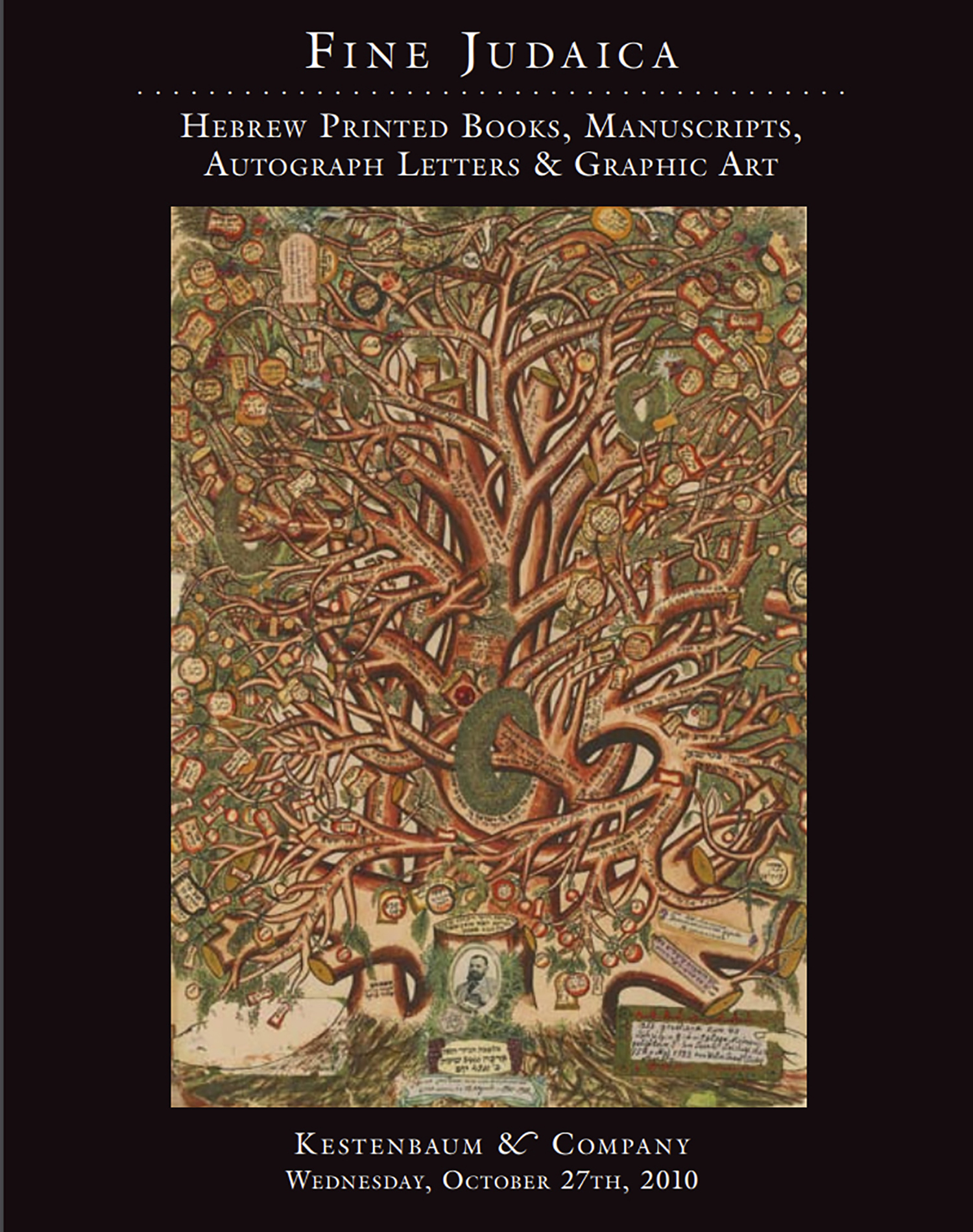Masechta Kidushin. With commentary of Rashi.

AUCTION 49 |
Wednesday, October 27th,
2010 at 1:00
Fine Judaica: Hebrew Printed Books, Manuscripts, Autograph Letters and Graphic Art
Lot 279
(TALMUD, BABYLONIAN).
Masechta Kidushin. With commentary of Rashi.
(Guadalajara: Solomon ben Moses Alkabetz HaLevi circa 1480-82)
Est: $35,000 - $50,000
PRICE REALIZED $20,000
THE VERY FIRST EDITION OF MASECHTA KIDDUSHIN. FOUR HEBREW LEAVES FROM SPAIN OF THE VERY UTMOST RARITY.
The very first publication of Talmudic Tractates was in Spain, however due to the mass destruction of Hebrew books during the Spanish Inquisition, Spanish incunabula in Hebrew are notoriously rare - indeed according to Offenberg they have almost entirely disappeared. Consequently, Offenberg considered the British Library's Spanish Tractate as "a unique copy…(although it is) incomplete at the beginning, middle and end (and) the signature collation uncertain" (BL p. 84). According to Offenberg, aside from the British Library copy, only four fragments exist of this Guadalajara incunable, all of which were accidentally discovered within the bindings of other books. Upon recent examination, the JTSL fragment is very defective and does not contain the leaves offered in the present Lot.
DATE:
Although Van Strallen estimates the date of publication to be 1485(?), E. N. Adler establishes the date of the Guadalajara Tractate Kidushin as 1482. Joshua Bloch notes that the last publication issued by the Alkabetz press to have been 1482.
ACCURACY OF THE TEXT OF TALMUD AND RASHI:
Both Joshua Bloch and Alexander Marx conjectured that the significant variants found in both the text of the Talmud and Rashi in the Spanish Tractates likely derived from early, accurate manuscripts which came to Spain from the Geonic Academies in Babylonia. Indeed after a careful comparison of the present leaves, one notes a different order of the text, as well as extra words and letters, even elimination of text in certain cases and other variants (including orthography) - amounting to a text significantly unlike that of the Bomberg edition and the much vaunted "Vilna Shas." Some of these variants are significant enough to change the meaning of the Gemara. For example, whereas the standard text cites "Rav Yehudah," the Guadalajara edition cites the name as "Shmuel bar Yehudah" - a different person altogether! One also finds the extra words "Tanu Rabbanan," indicating a Beraitha (a more ancient text), or the extra word "ela," indicating a complete reversal of a previously held theory.
f.2r. of the Guadalajara edition, line 15 (=Mishnah, 74a of the standard editions) cites the Tanna R. Elazar, whereas the standard editions read "Eliezer." Indeed, R. Isiah Berlin (Pick) of Breslau, in a lengthy note in the Masoreth HaShas changed the reading to "Elazar" (based upon independent analysis of the Gemara and Tosaphoth on f.75a, and Tosaphoth, Yevamoth 14b). This is but another indication of the superior textual accuracy of this Spanish edition.
Our text of Rashi also contains many important variants. To take just one example: On f.73b, the Spanish edition contains an extra word which provides an added dimension crucial to the understanding of the passage. The Talmud discusses the conditions and circumstances in which a "cast-away baby" is considered to be legitimate or not. If the mother abandoned him in a place where it is evident she wanted the baby to die, then it is considered illegitimate. However, if the baby were to be found in a well-trafficed location, evidently the mother wanted it to be saved and is thus considered to be legitimate. The mother's concern demonstrates that it was only due to extreme inability to feed and care for the baby that such drastic action was taken by her. Thus, if she placed the baby in a basket in the center of a river (near a busy shipping lane), then clearly she wanted him rescued by a passing vessel. In the words of Rashi: "Charifta de'nahara"–"sheya'avru sephinoth sham veyimtza'uhu" ('ships pass by there and they will find him"). Our Guadalajara edition adds the word "maher" ("quickly"), i.e., vessels so frequently pass by, the baby will be immediately rescued.
In certain cases, the reading of the Spanish edition corresponds to the intuitive emendation of the Bach (R. Yoel Sirkes). None of these meaningful variant readings are found in the recently published "Oz VeHadar" edition of the Talmud which went to great lengths to examine earlier texts. Clearly, these Spanish fragments are a new revelation, for even the minor variants assist in obtaining a smoother reading of the text.
A final note of interest, since this Guadalajara edition was printed prior to the Inquisition, it is free from censorship.Thus, whereas the standard Talmud editions employ the circumlocution "aku"m" for Gentile, here the original reading "goy" is retained.
PLACE OF PUBLICATION AND PRINTER:
Guadalajara was an important Jewish center North East of Madrid. The grandson and namesake of the printer was Solomon Alkabetz (c.1505-1584), the famous liturgical poet, author and Kabbalist, venerated today as the composer of “Lechah Dodi,” the mystical love-song to the Sabbath.
As a final point of reference: Discovering an altogether different Spanish incunable fragment elicited the following frisson of excitement from the esteemed Librarian of Hebrew Union College: “The rarest books, understandably, (are) those from Spain and Portugal. The acquisition of any Hebrew incunabulum is…noteworthy, and the library is proud to report the acquisition of… albeit it only a fragment." (H.C. Zafren, Studies in Bibliography and Booklore, Vol. XII, p. 45).
REFERENCES:
Adler, Talmud Printing Before Bomberg in: Simonsen Festskrift (1923) pp. 81-4;
Adler, Talmud Incunables of Spain and Portugal in: Kohut Festschrift (1935) pp. 1-4;
Bloch, Early Hebrew Printing in Spain and Portugal, p. 18.
Dimitrovsky, Sridei Bavli (1979) Vol. I: Introduction;
Goff-Heb 113 ;
Heller, Printing the Talmud (1992) pp. 20-9;
Iakerson, JTS Cat. (2005) Vol. II, no. 90;
Offenberg, British Library Cat. (2004) p. 84;
Offenberg, Census 132;
Rabinowitz, Ma'amar al Hadpasath HaTalmud, p.31;
Tishby, Incunabula in Israel, KS, Vol. 59, pp. 946-58, no. 66;
Vinograd, Guadalajara 23;
YU Museum Catalogue, Printing the Talmud, no. 12.
